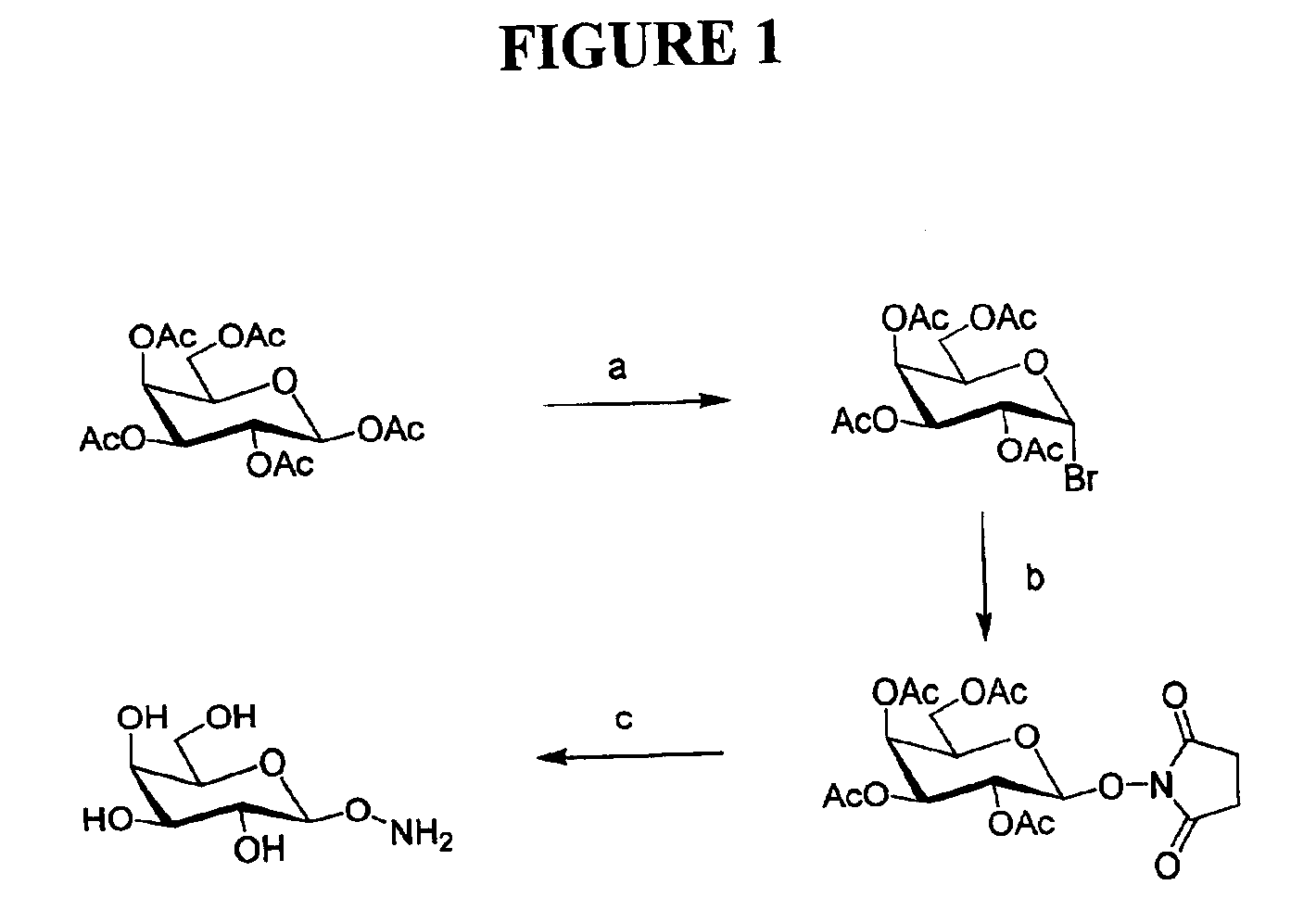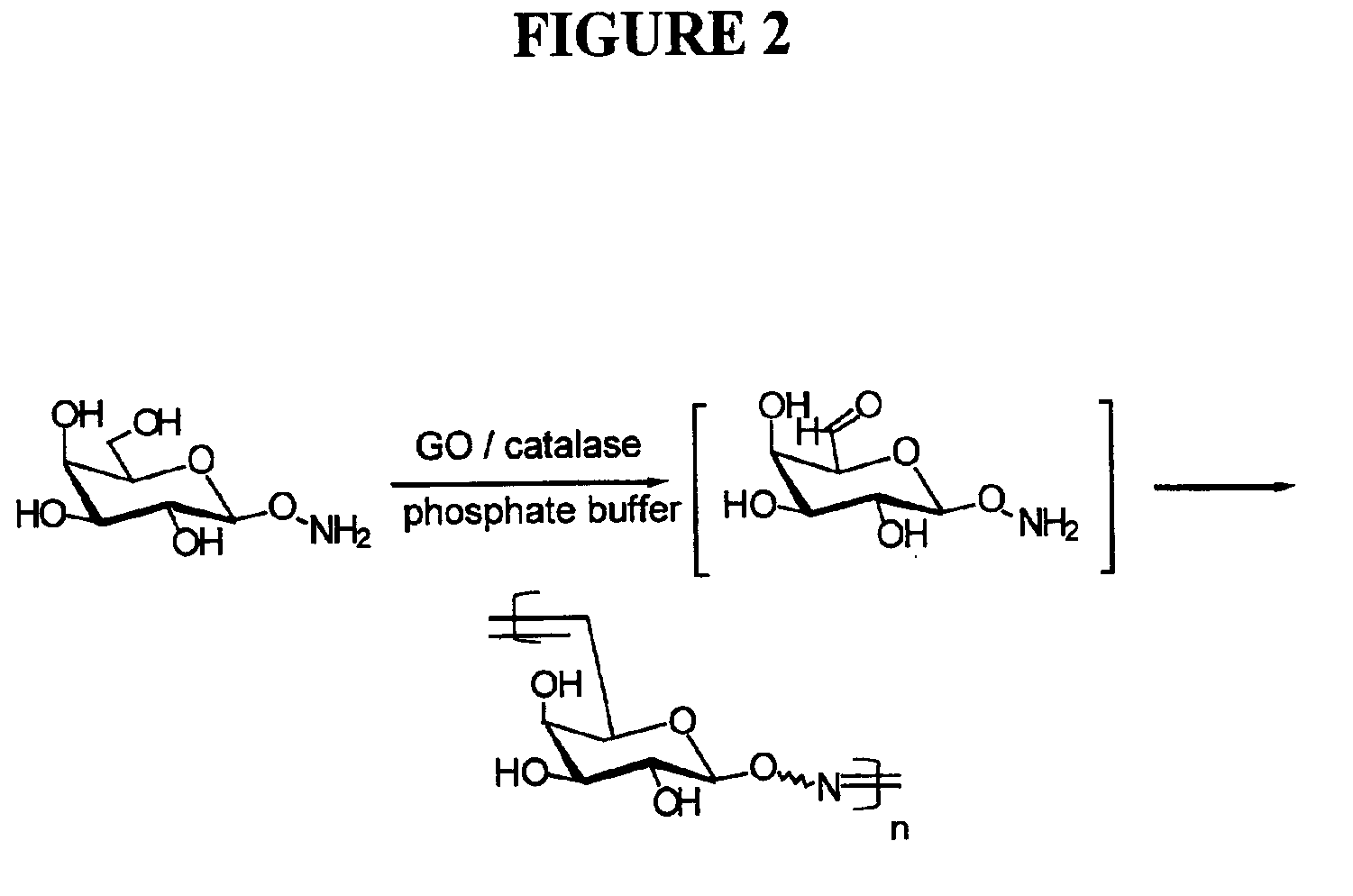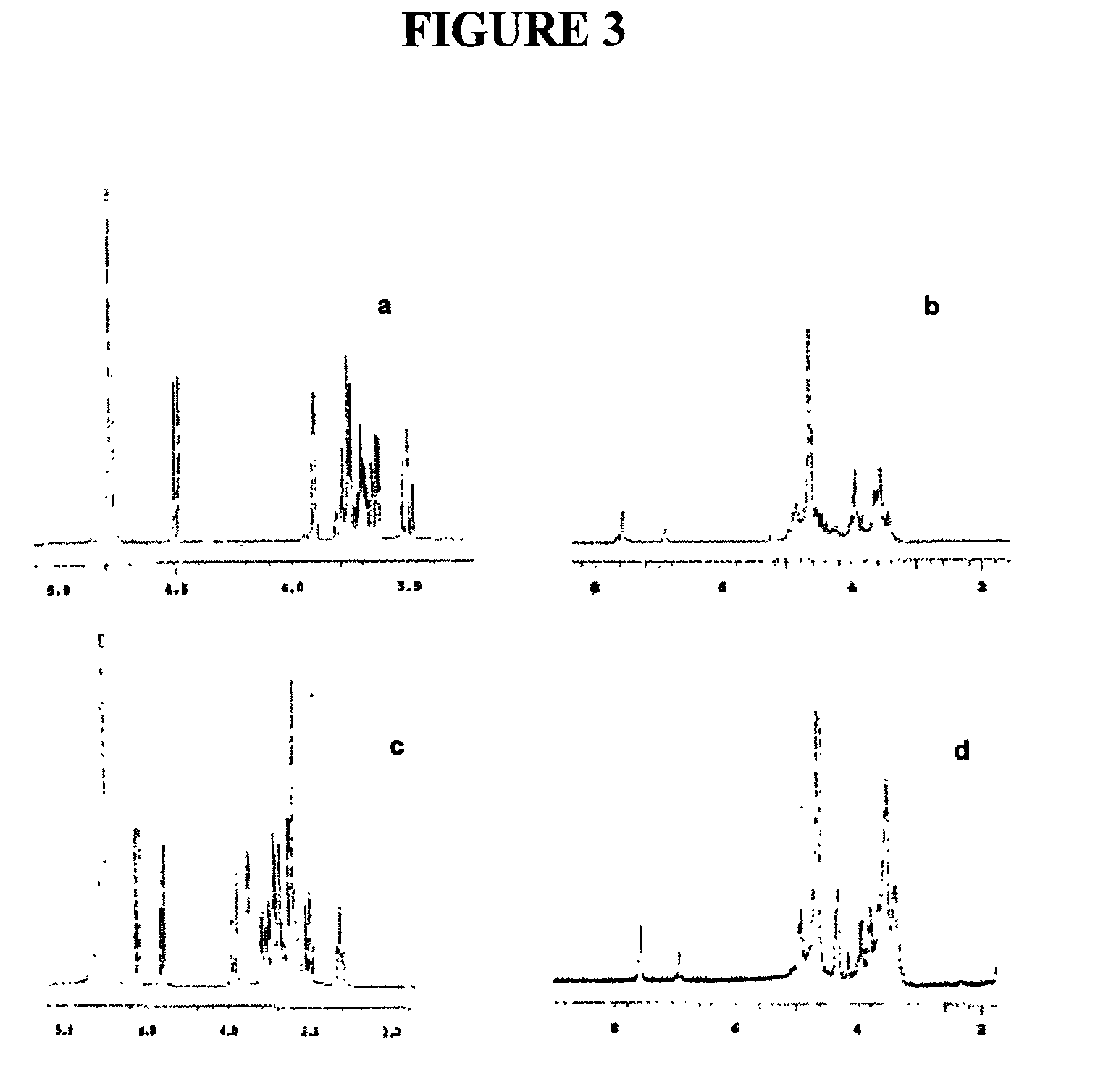Oxime-linked polysaccharides and methods of preparing the same
a technology of oxime-linked polysaccharides and methods, applied in the field of new polysaccharides, can solve the problems of low molecular weight polysaccharides, reported isolated yields in these reactions are relatively low (7-20%)
- Summary
- Abstract
- Description
- Claims
- Application Information
AI Technical Summary
Benefits of technology
Problems solved by technology
Method used
Image
Examples
example 1
Formation of 1-O-Hydroxylamino-galactose
Pentaacetyl galactose (D-galactose pentaacetate) (5 g) was dissolved with stirring in 15 ml of HBr—HOAc (32%, w / w). After 6 hours of stirring, the resulting mixture was diluted with CH2Cl2 (120 ml) and poured into crushed ice in saturated NaHCO3 solution (300 ml). The organic phase was separated and washed again with ice-cooled saturated NaHCO3 solution (150 ml) in a separatory funnel. The organic phase was dried over anhydrous Na2SO4 and evaporated to dryness to give 4.8 g (yield, 91%) of the bromide. The bromide was redissolved in CH2Cl2 (15 ml) and stirred vigorously with 1 M Na2CO3 solution (15 ml) containing N-hydroxyl succinimide (5.0 g), tetrabutyl hydrogensulfate (5.0 g) for 4 hours. CH2Cl2 (80 ml) was then added. The organic phase was washed with water (2×30 ml) and dried with anhydrous Na2SO4. Column chromatography (ethyl acetate / hexanes: 2.5 / 1) afforded 4.25 g (yield, 81%) of the N-succinimido compound.
The N-succinimido compound (2....
example 2
GO Reaction and Polymerization of 1-O-Hydroxyamino-galactose
A mixture of 200 mg 1-O-hydroxylamino-galactose, 120 unit of GO and 1200 unit of catalase in 10 ml phosphate buffer (50 mM. pH=7.0) containing 3 mg of CuSO4.5H2O was stirred gently with air bubbling through an air pump. After 10 hours, the starting material was entirely consumed as indicated by TLC. The reaction mixture was heated at 100° C. for 5 minutes to denature the enzyme. After filtration, the filtrate was dialyzed (using a dialysis membrane with molecular weight cutoff of 1000 daltons). Lyophilization of the retentate gave a whitish solid (yield 62%)
example 3
GO-mediated Polymerization of Different 1-Hydroxyamino Sugars
The procedures outlined in Examples 1 and 2 have been repeated for galactose and several disaccharides. The results are summarized in Table 1. The reactions of 1-O-hydroxylamino-galactose proceeded readily at room temperature. The corresponding reactions for 1-O-hydroxylamino derivatives of disaccharides were found to be slower under the same conditions. Nevertheless, polymerization did take place in both cases.
In order to monitor the reactions, thin layer chromatography (TLC) was used. As the reaction proceeded, a spot began to show at the bottom of the silica-gel TLC plate (the solvent system being i-PrOH / H2O / NH3—H2O at 7:3:2). The spot did not move even with more polar solvent systems. FIGS. 3a-3d show the 1H NMR spectra of the products isolated from the reactions of galactose and lactose. Specifically, spectra corresponding to starting material and polymer product are as follows: (3a) 1-OHN2 galactose; (3b) gal-polymer...
PUM
| Property | Measurement | Unit |
|---|---|---|
| Mass | aaaaa | aaaaa |
| Mass | aaaaa | aaaaa |
| Mass | aaaaa | aaaaa |
Abstract
Description
Claims
Application Information
 Login to View More
Login to View More - R&D
- Intellectual Property
- Life Sciences
- Materials
- Tech Scout
- Unparalleled Data Quality
- Higher Quality Content
- 60% Fewer Hallucinations
Browse by: Latest US Patents, China's latest patents, Technical Efficacy Thesaurus, Application Domain, Technology Topic, Popular Technical Reports.
© 2025 PatSnap. All rights reserved.Legal|Privacy policy|Modern Slavery Act Transparency Statement|Sitemap|About US| Contact US: help@patsnap.com



